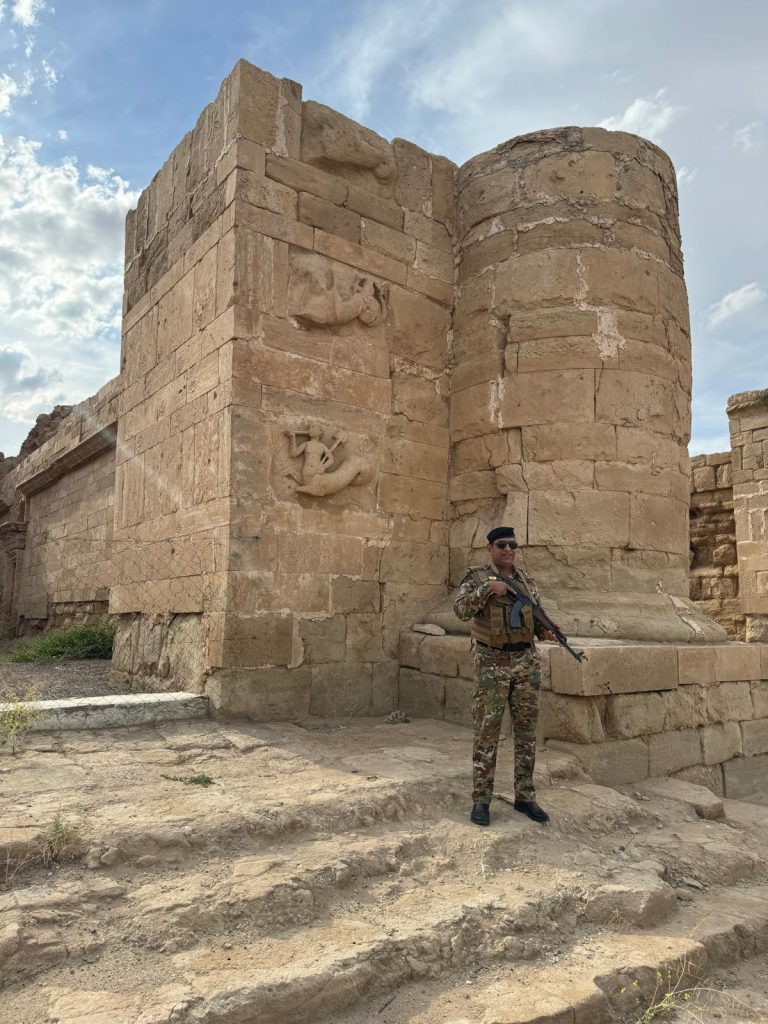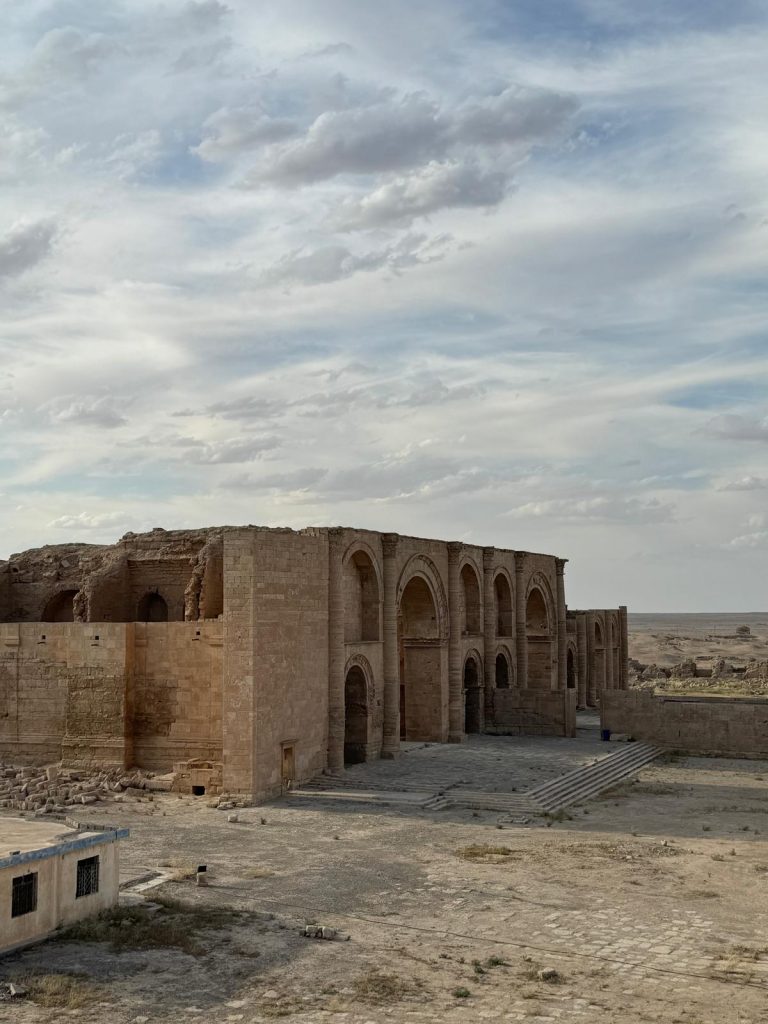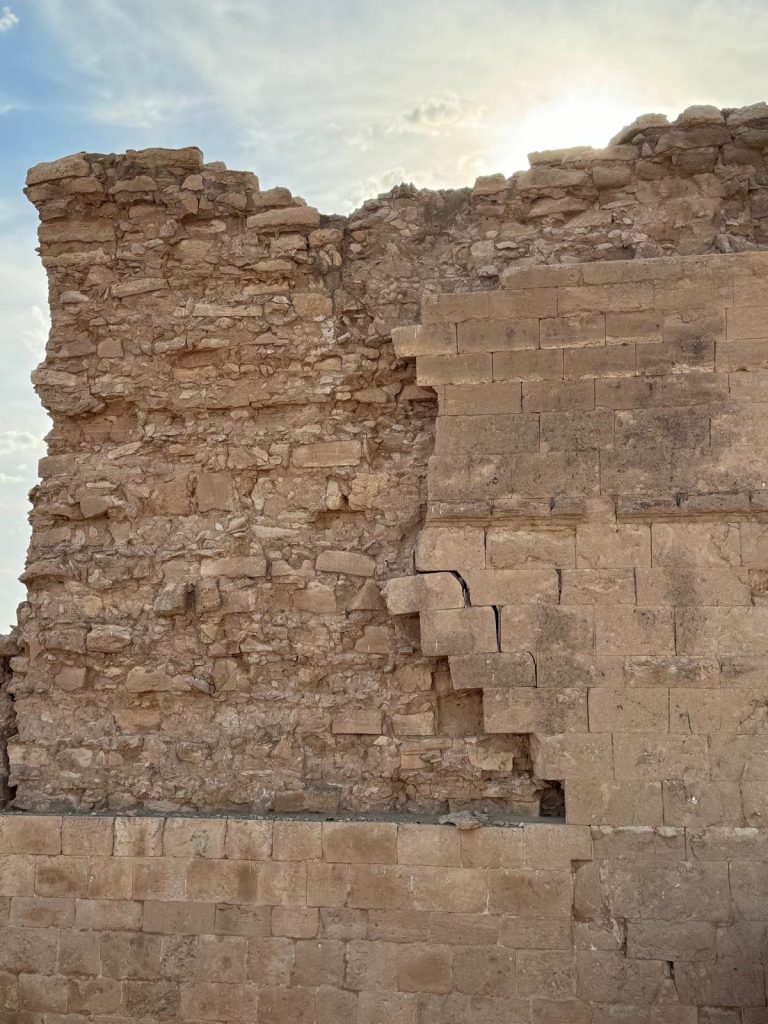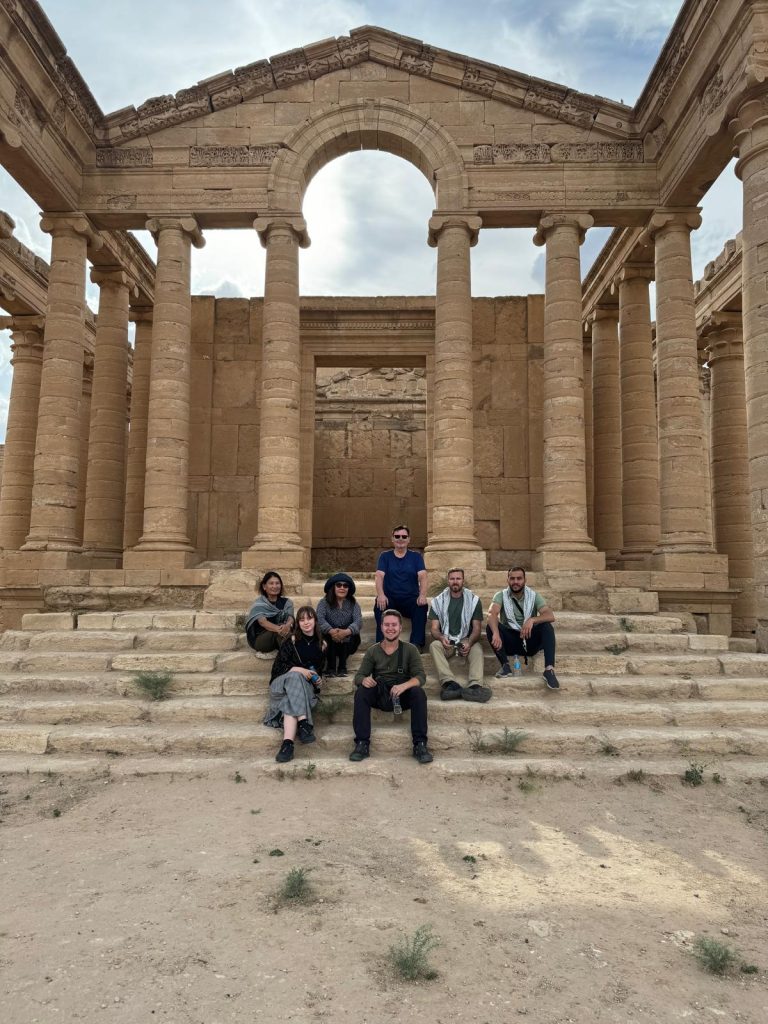Visiting Hatra is perhaps one of the most challenging archeological sites to visit in Mesopotamia. Hatra was one of the most important cities to the Parthian Empire and was seen as a buffer city to the Roman Empire.
Hatra during its peak was a religiously diverse kingdom where citizens could experience some levels of relative religious freedom and diversity in religious thought. Temples in Hatra dictate paganistic beliefs and the worship of animals and elements. The circumference of the city stretches 6.4km and at its peak, was home to many temples as well as souks and houses. Hatra is considered the largest and most well-preserved Parthian ruins known to man.

The History and Downfall of Hatra
While much of Hatra’s past is unknown, some information about the city of Hatra reveals a prosperous past. The city began in the very early AD, thrived in the second century AD and fell in the third century AD. The Kingdom of Hatra fell due to the conquest of Shāpūr ruler of the Persian Sāsānian dynasty. There is, of course, a love story involved in the telling of Hatra’s demise. The daughter of the King of Hatra was said to have fallen for Shāpūr and allowed him to conquer the city.
The conquering included the ultimate death of her father, the King and led to the pair marrying and the end of the family’s rule in Hatra.
Like many ruins in Mesopotamia, Hatra was seemingly swallowed by the desert over time and was not discovered until the 19th century. Although, most of the ruins are still believed to be underground and are yet to be excavated. Some artefacts have been recovered over the years, as a result of different projects and many items remain in the Baghdad Museum.

Hatra Under Saddam
Hatra joined a list of archeological sites that were refurbished under the Saddam rule. Visible differences between the original site and the expansion include different coloured/shades of beige bricks and Saddam stamps embroiled on the brickwork. A similar reconstruction was completed at Babylon and other sites in Iraq under the Saddam government, as an effort to recreate archaeological sites as they were at their peak.
Under the Saddam government, the Ba’ath party increased the budget for the Department of Antiquities by more that 80%. This lead to the Ba’ath party – or more accurately – Saddam commissioning works on some of Iraqs most important ancient cities and ruins. His initials in Arabic are stamped into bricks so that you don’t forget the kind of leader he was.

Hatra During the Recent War
In 2014, ISIS took Hatra to utilise the large area as a training ground. This method of stationing in historically significant ruins (similar to what was done in Palmyra in Syria by ISIS) was a strategy to ward off aerial bombings and attacks by other militias and armies. This proved successful as ISIS spent years occupying Hatra. Unlike the Palmyra excavation sites, the damage ISIS did to Hatra was far less destructive. While of course figures and idols were decapitated and broken off into smaller stones, the pagan temple of Hatra still remained as did many other religious sites ISIS would consider to be heretic.
The world was surprised at the lack of damage caused by ISIS – after all, it was used as a playground to practise fighting techniques and combat scenarios. While some reported (including UNESCO) the utter destruction of Hatra, on arrival you will notice how well the ruins are preserved despite their turbulent history. For a very long time, visiting Hatra was not an option.
Visiting Hatra in 2025
Hatra is not yet fully open to the public. Visiting Hatra requires special permission that is not granted to everybody and the process of purchasing entry is complex. On our YPT tours to Iraq, we visit Hatra and handle the whole admission process.
Would you like to join us in Iraq? Enquire about our Whole Iraq Autumn Combo Tour this October 17 – 29!






